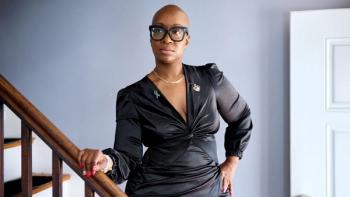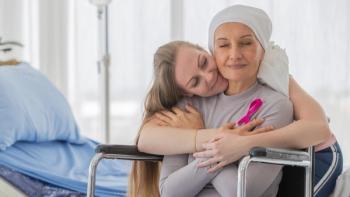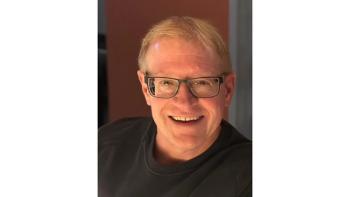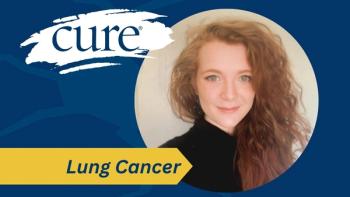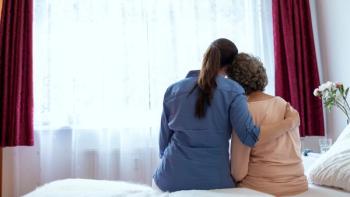
- Winter 2007
- Volume 1
- Issue 3
Letters
Letters from Readers.
“I look forward to receiving your magazine. Thank you so much for being there for cancer survivors.”
As the mother of a childhood cancer survivor, I too enjoy receiving your magazine. But I cannot remember ever finding an article that actually made me laugh! Thank you for including
Janie Archer | Griffin, Ga.
Jim Chastain’s article “Lower Extremities” was a hoot! I am a two-year sarcoma survivor and his article made me laugh in a way I haven’t laughed in the last two years. It was wonderful to enjoy a deep, long belly laugh. Thank you for including “tumor humor” in the magazine!
Holly Miles | Marysville, Wash.
I think Jim Chastain is a weenie! In the fall issue, he had a humorous essay, “Lower Extremities,” on the horrors of catheterization. Like him, I have soft-tissue sarcoma. Unlike him, I have to catheterize myself daily. A number of cancer survivors do this. I have catheterized myself on an LA freeway. I can catheterize with one hand in the dark. Putting in a catheter is not “one of the worst jobs in the world,” as he wrote. His essay was akin to someone writing about the misery and humiliation of being stuck in a wheelchair for a couple of days, and, wow, he is so glad that he doesn’t have to use it now.
Suzie Siegel | Tampa, Fla.
A heartfelt thank-you for your piece on treatment-related pain [
Barbara Rascati | Branford, Conn.
Thank you for your timely article, “Help for Where It Hurts.” Pain management works best and is most effective when it is understood within the framework and context of “total pain.” Although an understanding of pain may first begin with the physical component and pharmacologic interventions, it should never be limited only to this aspect. Pain may be experienced by the person in a multitude of ways: physically, emotionally, socially, and spiritually. An assessment therefore of a person’s pain must always be governed by this multidimensional approach or, as your article indicated, a “biopsychosocial model.” As professionals, we need to be vigilant in understanding our patients’ pain through the lens of their experience rather than solely through the prism of our own values, belief system, and knowledge base. Only when the helping professions keep in mind that pain is real and is what the person says it is will patients receive the quality pain management that is their basic human right.
Glenn Meuche, MSW, MA | Pain Services Program Coordinator | CancerCare of New Jersey | Ridgewood, N.J.
I am currently under treatment for breast cancer, which metastasized to my bones in 2003. I have been under treatment with various chemo regimens since that time. I received the premiere issue of Heal magazine and, while it is a welcome addition to the information about cancer and survival, I found myself feeling increasingly left out of the discussion. There are thousands of cancer patients like me who will never be “cured” or “healed” or be “living well after cancer” (your magazine subtitle) in the complete sense of those words. We will most likely always be under some type of treatment for the rest of our lives. Please remember that we exist and would eagerly read information about dealing with ongoing, long-term treatment while at the same time maintaining hope and life activities.
Ruthann Evans | Fresno, Calif.
Editor’s Note: The evolution of cancer from an acute disease to a chronic disease, as highlighted in the cover story of our premiere issue, will be an ongoing part of Heal.
I am a two-year survivor of non-Hodgkin’s lymphoma. I too was told that I would probably go through early menopause. It didn’t upset me much because I already had three boys, ages 6, 2 and 6 months — and I was 31 years old. I started my therapy, and one week later became pregnant. I was shocked, scared for my health and the baby’s. Nine months later I delivered a beautiful baby girl who is now a year old and perfectly healthy. I too look at life differently and live passionately [
Jeanne Prudhomme | Lawtell, La.
I wanted to share my latest “Godwink” with you ... you know those little coincidences that really aren’t coincidences at all. I was at the hospital waiting for an elevator. I noticed there was only one copy of Heal left in the stand, so I quickly snatched it up and tucked it in my bag to read later. When I was finally able to thumb through it, I opened it exactly where I should have ... right at your very moving tribute to Karen and the other original members of the Engaging the Spirit group [
Paula Doyle | Dallas
Our
Kathy LaTour | editor-at-large
Articles in this issue
about 18 years ago
Cancer Odysseyabout 18 years ago
A Mission of Empowermentabout 18 years ago
Growing Up After Cancerabout 18 years ago
Snippetsabout 18 years ago
Helping Quitters Quitabout 18 years ago
Voicesabout 18 years ago
Friends for Lifeabout 18 years ago
Letting Your Guard Downabout 18 years ago
Days of Wine and Chocolateabout 18 years ago
A Virus as ‘Smart Bomb’
